This past spring, I noticed a story getting a lot of attention in the news; that the great toilet paper debate had finally been settled. On March 16, 2015, Next Web contributor Owen Williams stated on Twitter that he had discovered the definitive answer to an age-old debate over the proper orientation for hanging toilet paper on dispensers.
The question about whether the toilet paper should be placed in the holder with the paper hanging “over” or “under” has been waged for a long time.
The subject even has its own section on Wikipedia, called “Toilet Paper Orientation,” filled with arguments for “over” (reduces the risk of transferring germs, easier to find the end, looks better) versus “under” (tidier appearance, harder for a pet to unravel the roll).
The entry states that “the choice is largely a matter of personal preference, dictated by habit. In surveys of US consumers and of bath and kitchen specialists, 60–70 percent of respondents prefer over,” and that “advice columnist Ann Landers said that the subject was the most controversial issue in her column's history.”
Joseph Gayetty is widely credited with being the inventor of modern commercial toilet paper in the United States. Gayetty's Medicated Paper was introduced in 1857, and was sold in packages of flat sheets.
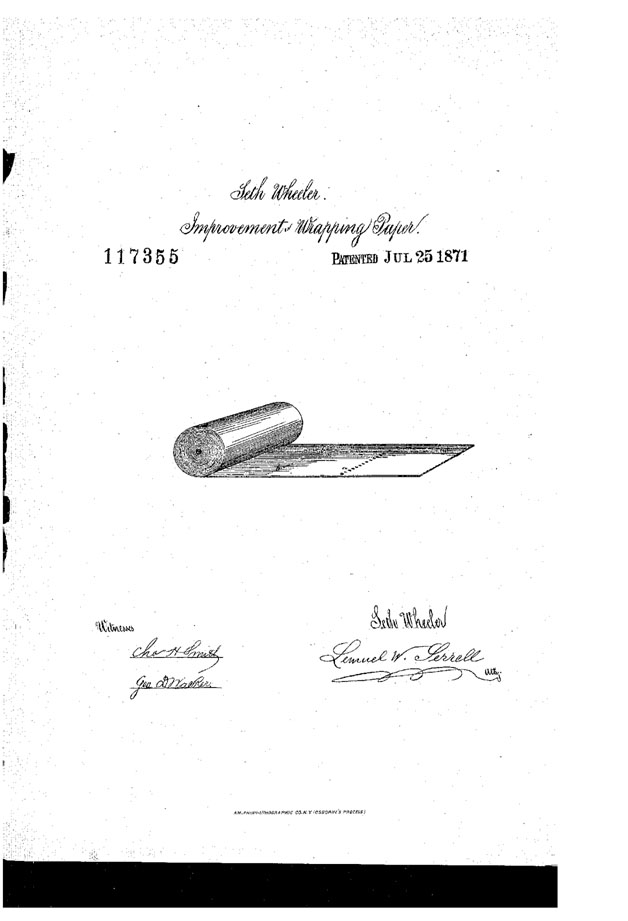
Seth Wheeler of Albany, New York patented the idea of perforating a roll of papers in 1871, with the “Improvement in Wrapping-Paper, Patent No. 117,355.”
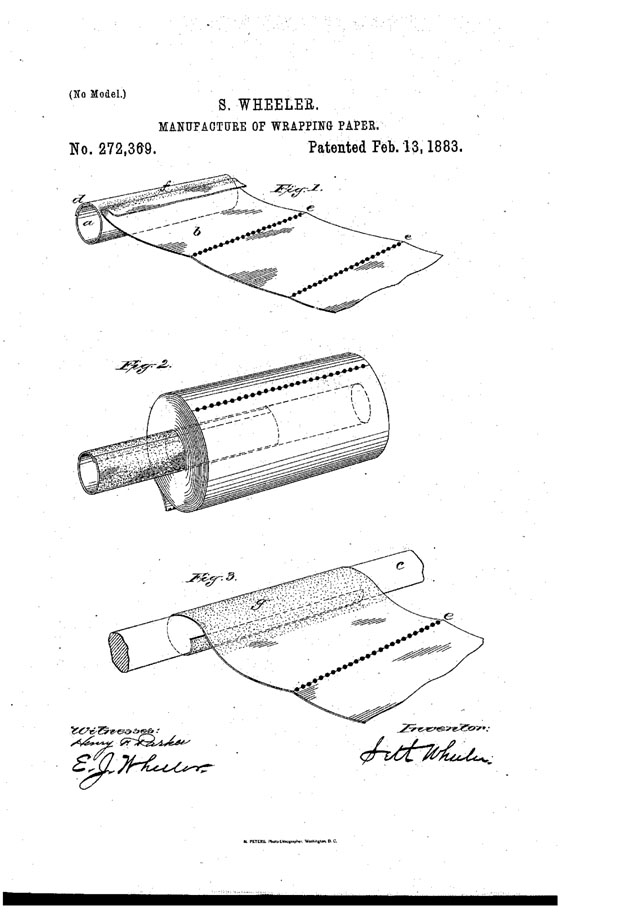
In 1883, Wheeler was granted patent 272,369, for a “new and useful Improvement in the Manufacture of Wrapping-Paper,” which presented a roll of perforated paper supported in the center with a tube for “toilet or for ordinary wrapping-paper.”

But the big revelation comes from the September, 1891 patent 459,516 for “certain new and useful Improvements in Wrapping or Toilet Paper Roll.”
This patent clearly shows the paper in an “over” position, indicating that was how the paper was meant to be used. The appearance of the patent on Twitter was supposed to have resolved the debate once and for all!
A little research into Hagley’s collections did not find any signs of toilet paper in plumbing catalogs from the 1884 or 1888, but by 1895 Montgomery Ward featured three types of “toilet or watercloset paper.” One strange looking oval roll came with a free “fixture” with a case (100 rolls) of paper.
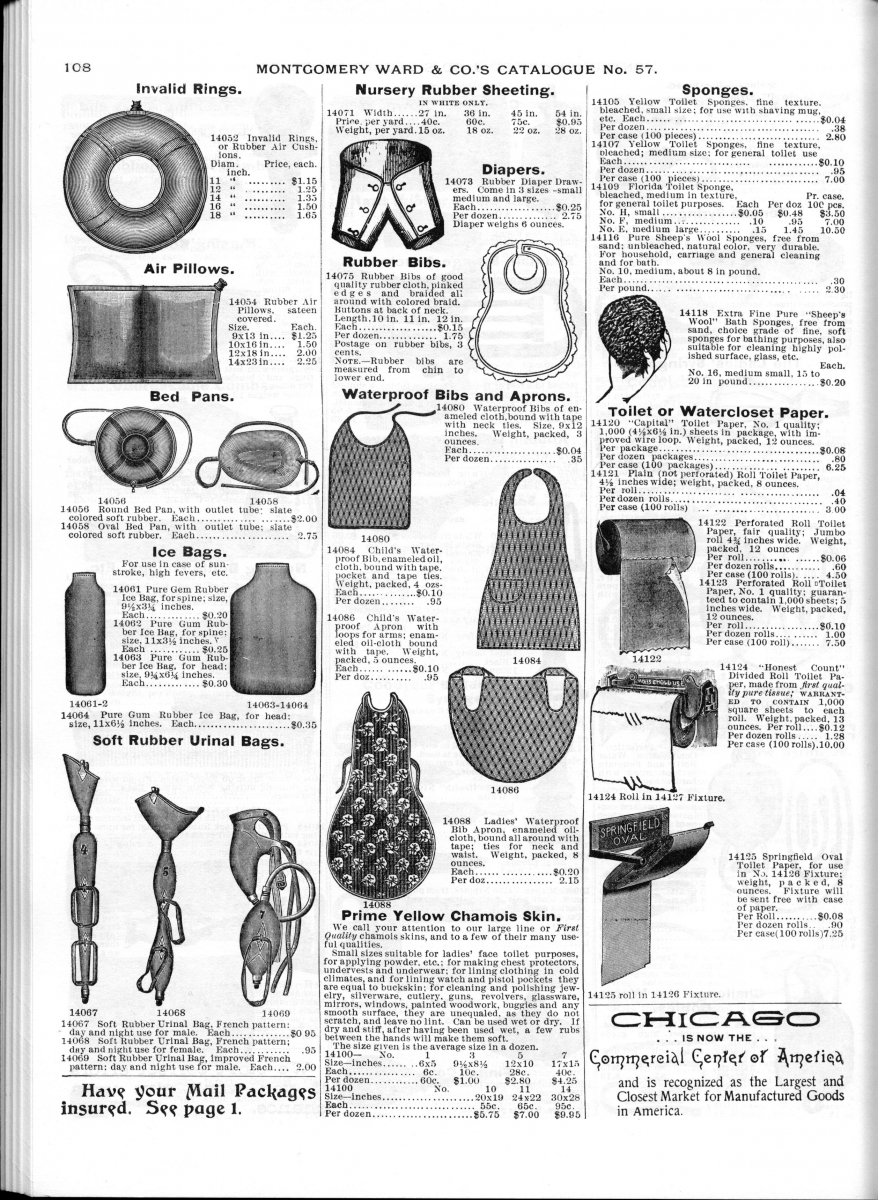
Montgomery Ward Catalogue and buyers' guide, no. 57, spring and summer, 1895.
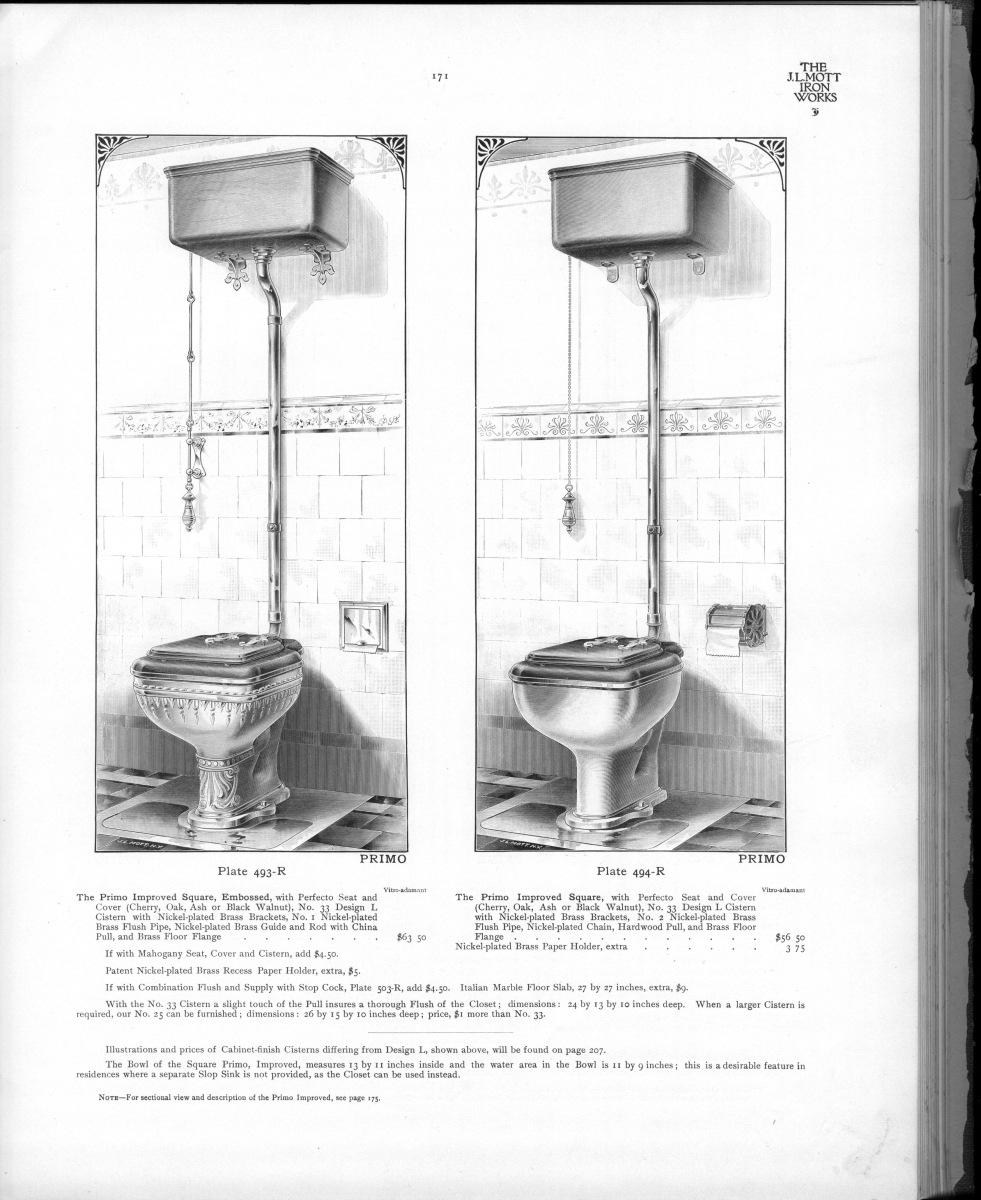
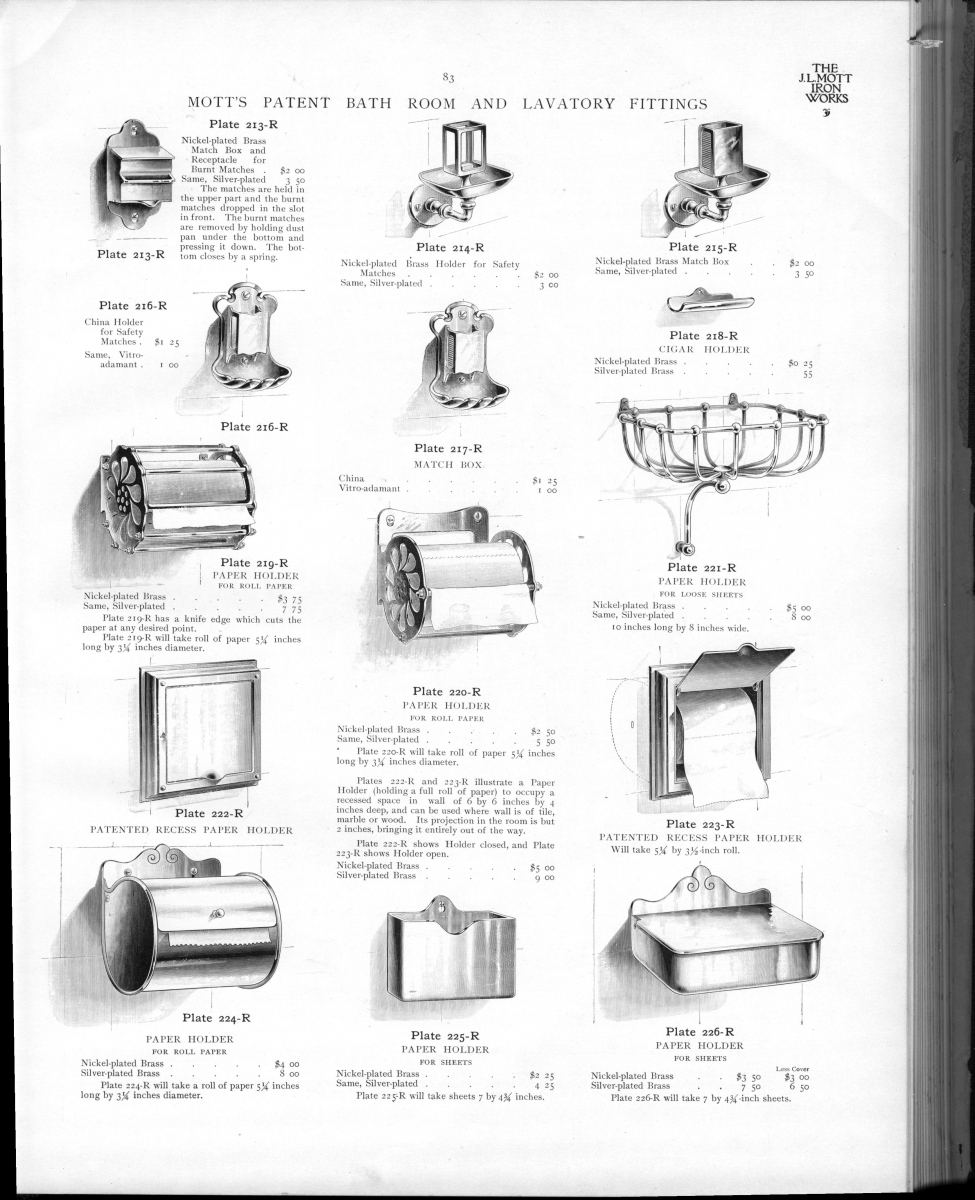
Left: In 1897, a catalog from the J.L. Mott Iron works shows several types of toilet paper holders.
Right: This page featured a holder mounted to the wall, and one which is recessed into the wall. The J.L. Mott Iron Works plumbing and sanitary department. Catalogue "R". [New York], c1897.
I don’t know if these interesting images will solve the debate in your household, but I have a new respect for this “fixture” that I have previously taken for granted.
Linda Gross is a Reference Librarian in the Published Collections department at Hagley.
